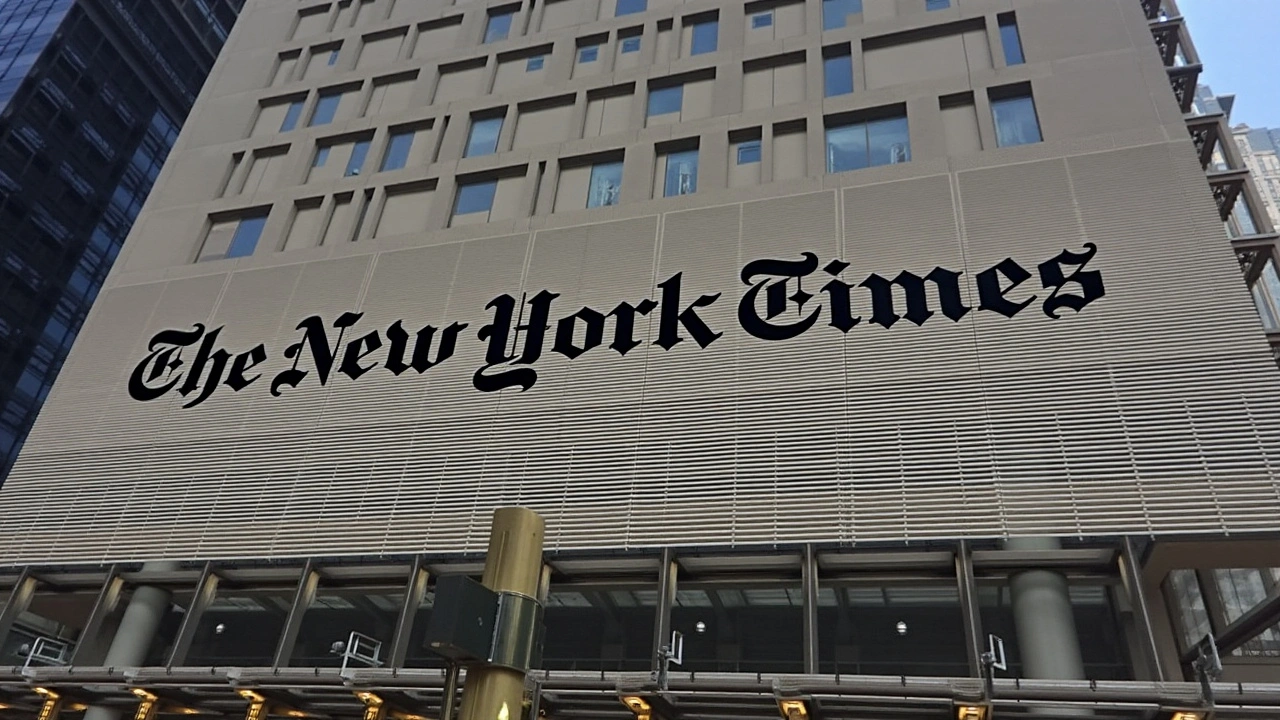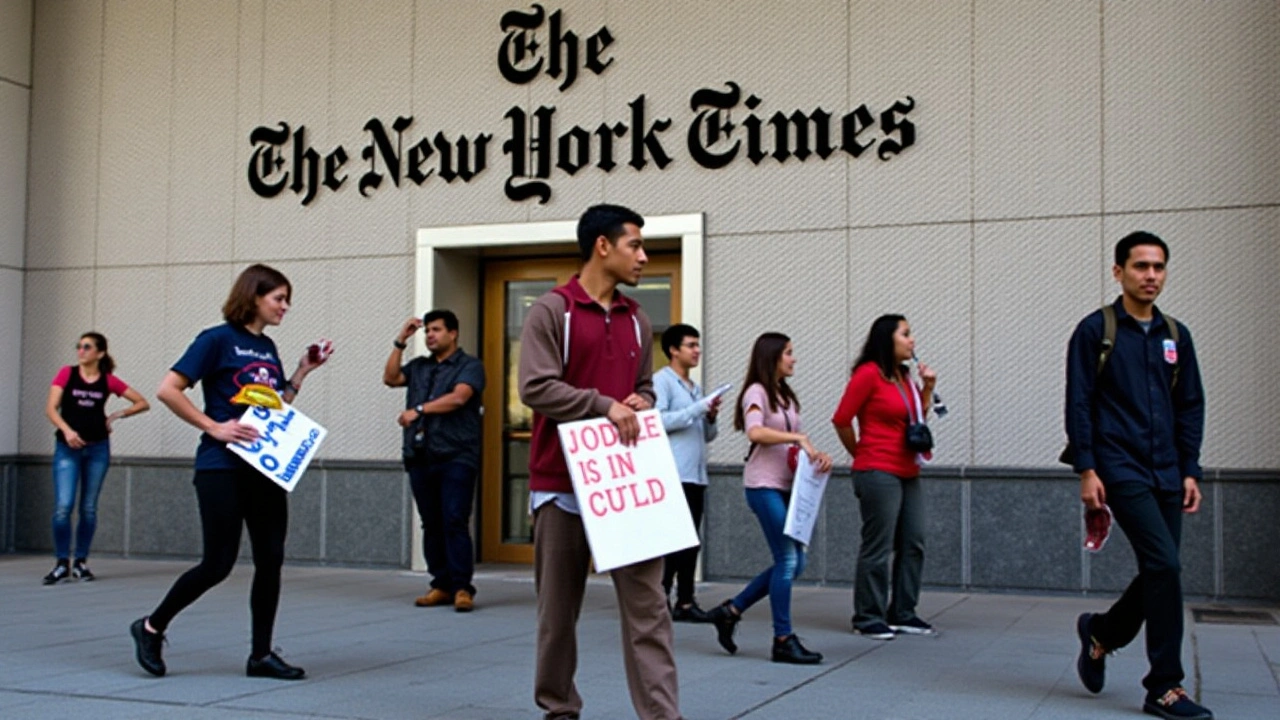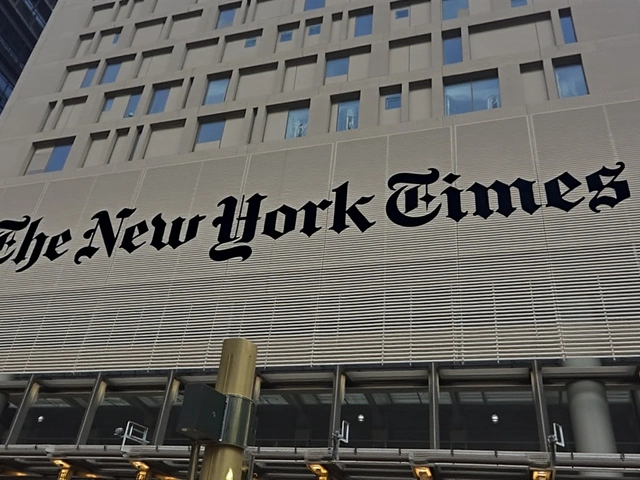
The Controversial Launch of the New York Times' 'Needle' Election Predictor Amidst Union Strike
In a time where the credibility of election results is fiercely scrutinized, The New York Times has decided to take a bold step by launching its 'Needle' election predictor amid ongoing labor disputes with its tech team, The Times Tech Guild. This tool, widely known for projecting real-time election outcome probabilities, aims to provide immediate insights before official results are announced. However, the backdrop against which this launch occurs casts a shadow over its intended efficacy and accuracy.
The 'Needle', as it is colloquially known, endeavors to fill a void left by traditional election data services like AP VoteCast and Edison Research, which only declare winners upon near-certain outcomes. While the New York Times envisions its tool as cutting-edge, its deployment is not without controversy. In 2016, the 'Needle' underestimated Donald Trump's chances, sparking a debate about the reliability of such predictive technologies. Since then, the tool has been refined and successfully utilized, such as during Alabama's Senate race in 2017, which was characterized by a wide unpredictability. These improvements, however, may face a stern test due to an unusual and complex situation currently unfolding.
The Context of a Union Strike
Amid the launch excitement lies a stark reality: the tech workers responsible for running these sophisticated systems are currently on strike. Many of these workers, members of the Times Tech Guild, have voiced their grievances over labor conditions, including pay disparities and lack of benefits recognition. Their strike, therefore, raises significant concerns about the 'Needle's' functionality and reliability. Nate Cohn, the Times' chief political analyst, has candidly expressed doubts about the possibility of publishing a live version, alluding to technical challenges directly stemming from the absence of these crucial tech workers.
While the tool’s real-time probabilities offer a fresh perspective by attempting to anticipate public sentiment shifts, glitches due to the strike could lead to an inaccurate representation of the political landscape. This unpredictability necessitates a contingency approach where journalists may frequently update a live blog to approximate the statistical model produced by the 'Needle'. Such a strategy aims to maintain the tool's original intent but through a more manual intervention by human analysts.
Other Media Outlets and Their Methodologies
With the technology of election predictions under increasing scrutiny, other media giants like the Associated Press (AP) have doubled down on transparency. AP has magnified its efforts to explain its methodology, providing the electorate with clearer insights into how they tabulate and project election results. Similarly, the Washington Post is investing in additional data sourcing through collaborations with Edison Research, ensuring that every call they make is backed by robust and varied data.
In addition to these larger organizations, smaller firms like Decision Desk HQ offer alternative perspectives and methodologies. They emphasize different data sets and statistical approaches, providing viewers with multiple angles of understanding election dynamics. This diversified approach across the media landscape promises voters a broader spectrum of information sources, potentially leading to a more informed public.

The Future of Real-Time Election Predictions
As the technology behind election predictions continues to evolve, the necessity for accuracy deepens, especially amidst a charged political atmosphere. The pressure is immense for media outlets to not only remain technologically adept but to also relay trustworthy information. While the current union strike poses immediate challenges to the 'Needle's' operation, it also opens a dialogue about the intersection of labor relations and technological advancements in journalism. In this dynamic and complex environment, how the New York Times navigates its path could set precedents for other media outlets grappling with similar challenges.
For the Times, adapting to these immediate hurdles while relying on backups like real-time blog updates might bridge the gap temporarily. However, moving forward, resolving the underlying labor issues is paramount to ensuring the seamless operation of their election prediction tools. Moreover, continued investments in refining statistical models and enhancing methodological transparency will be critical in restoring and maintaining public trust in media-driven election predictions. This evolving narrative paves the way for meaningful discussions on the reliability and ethics of real-time election predictions in modern journalism.






